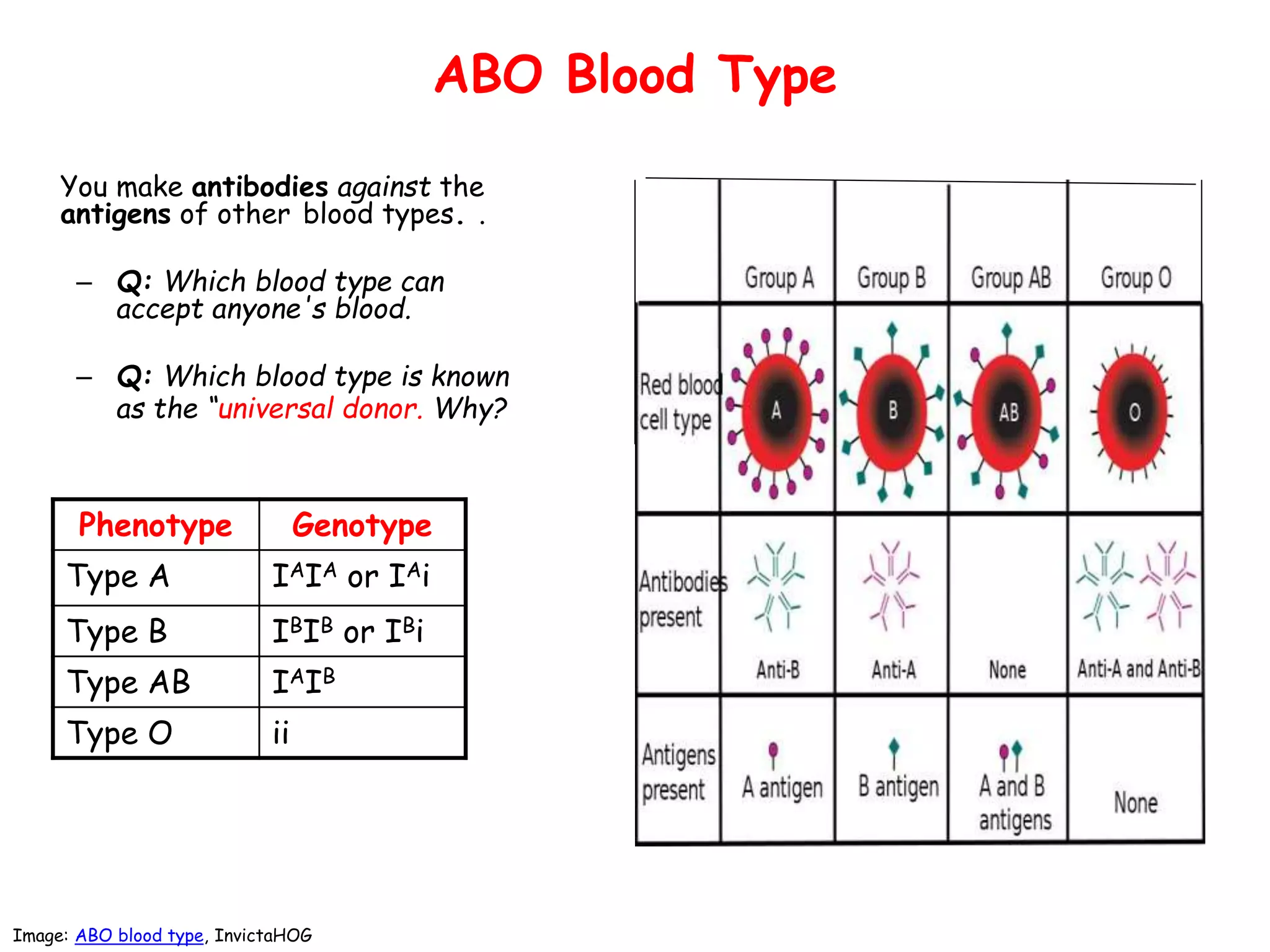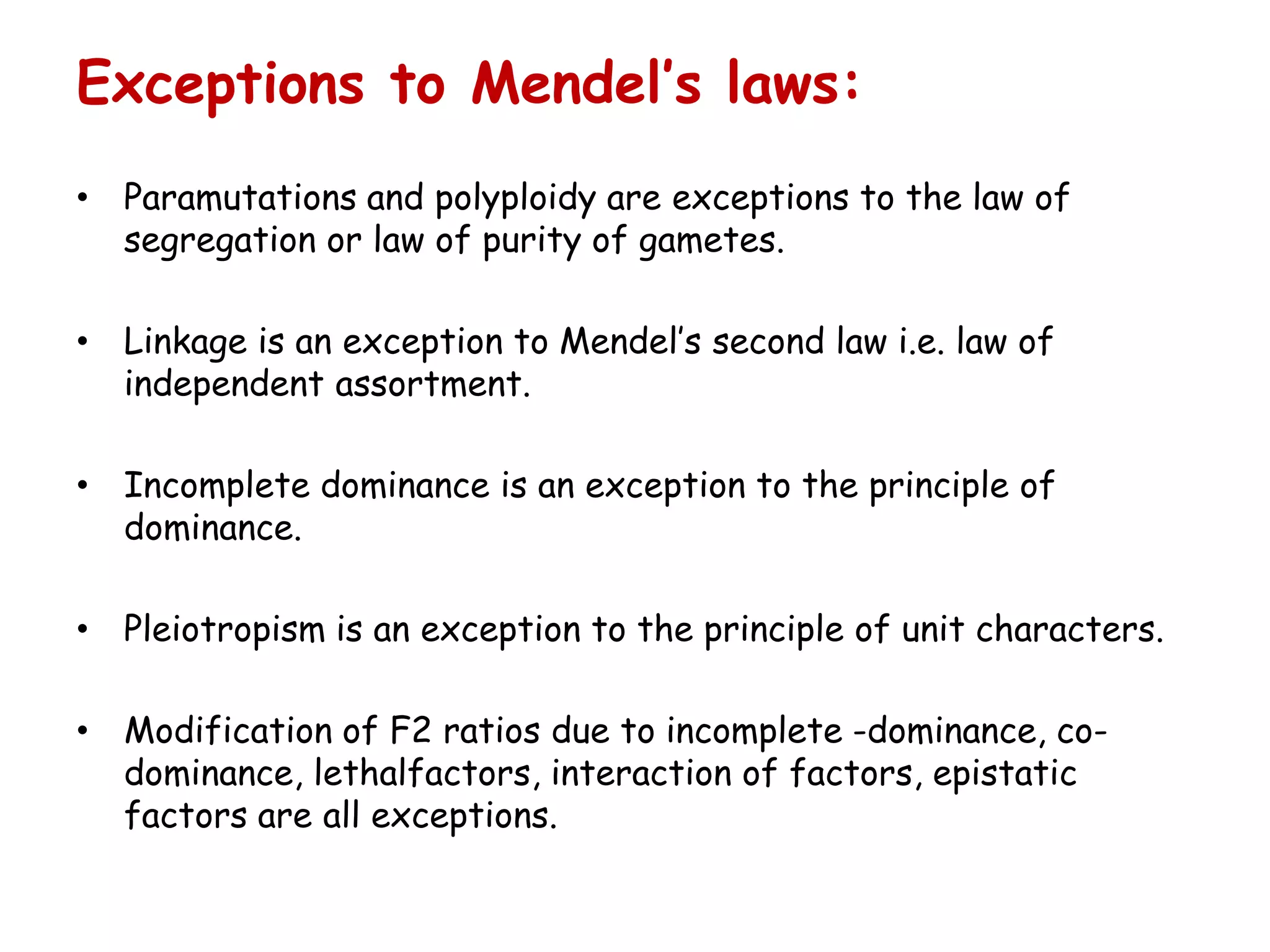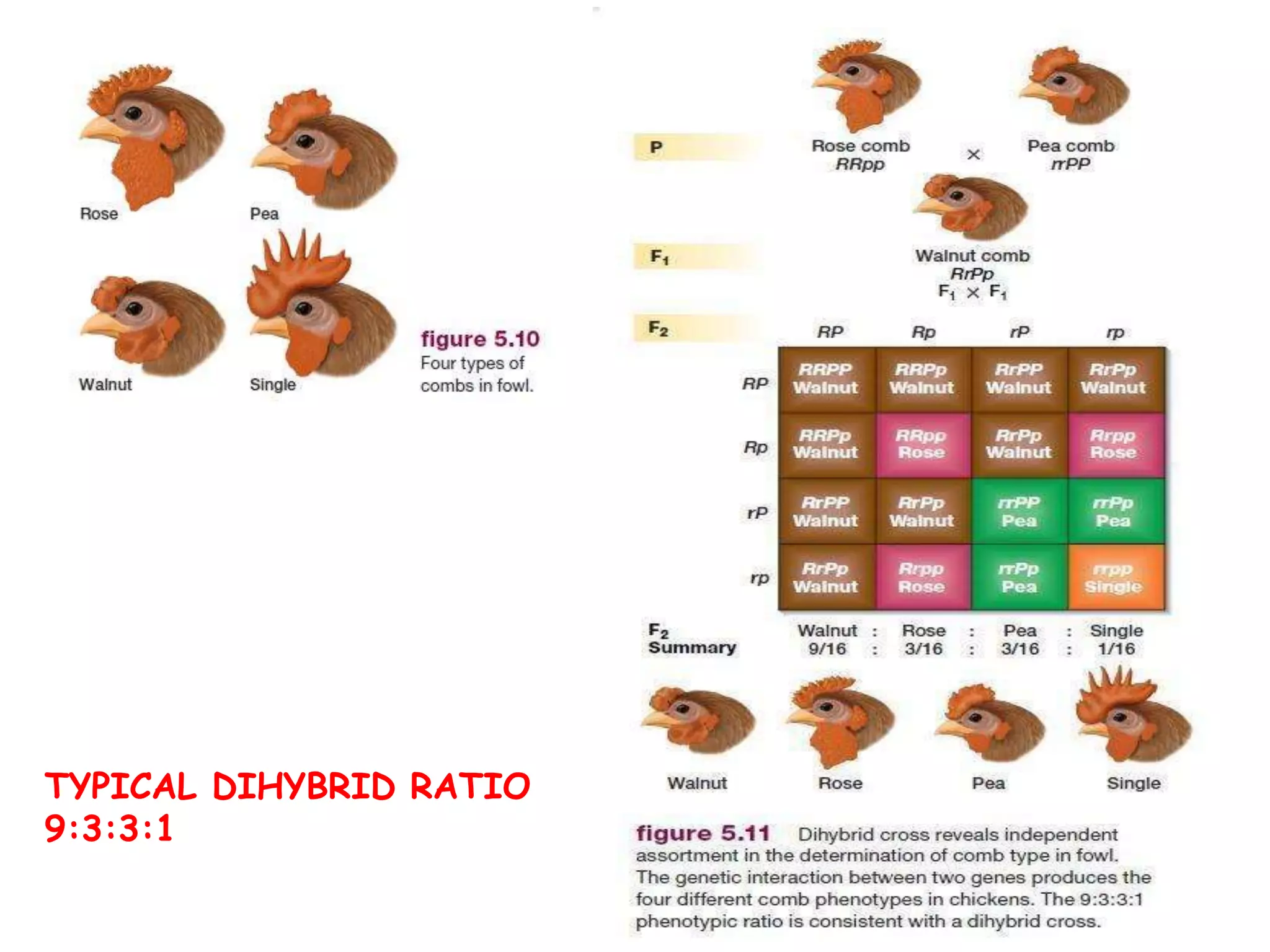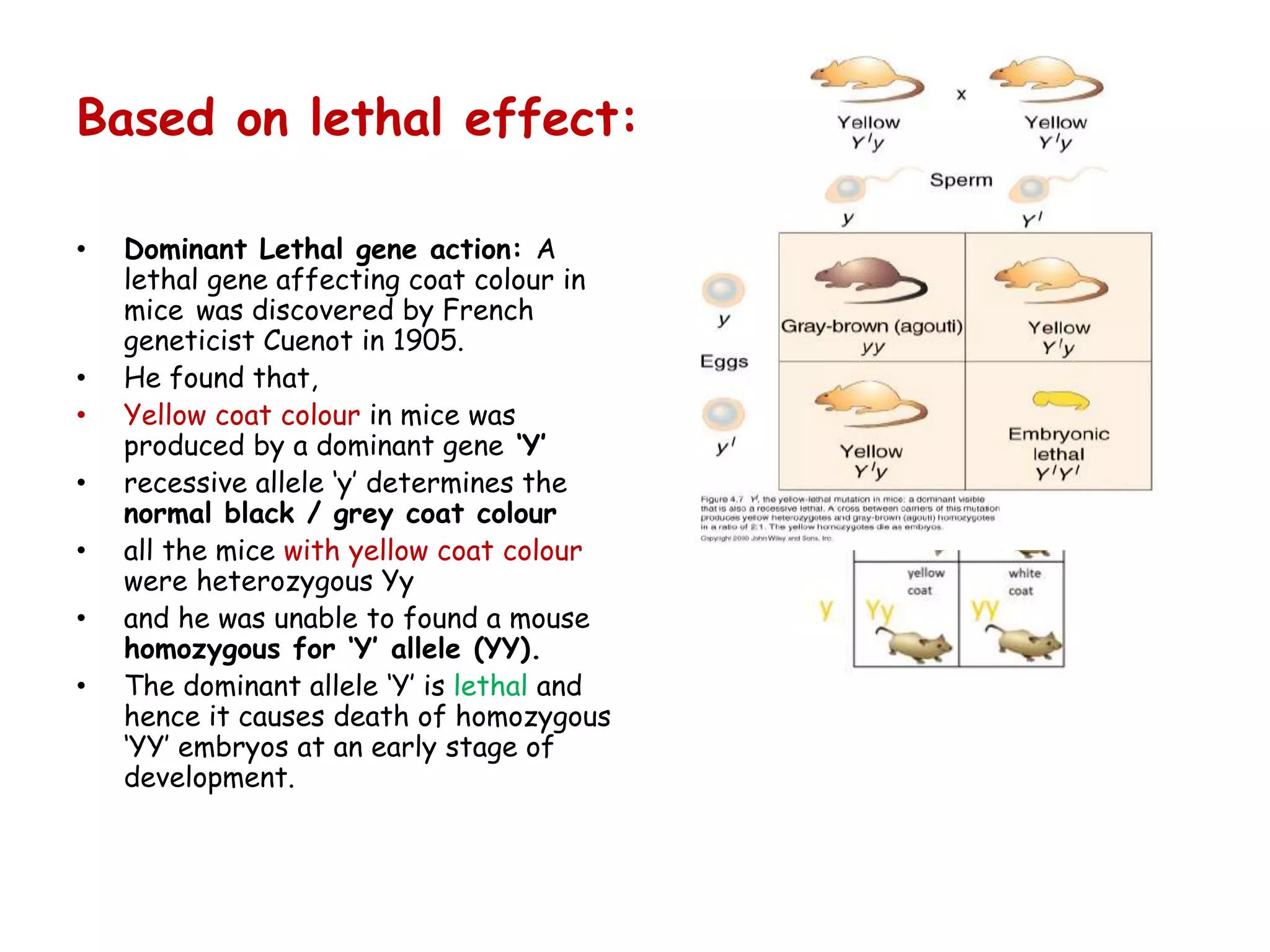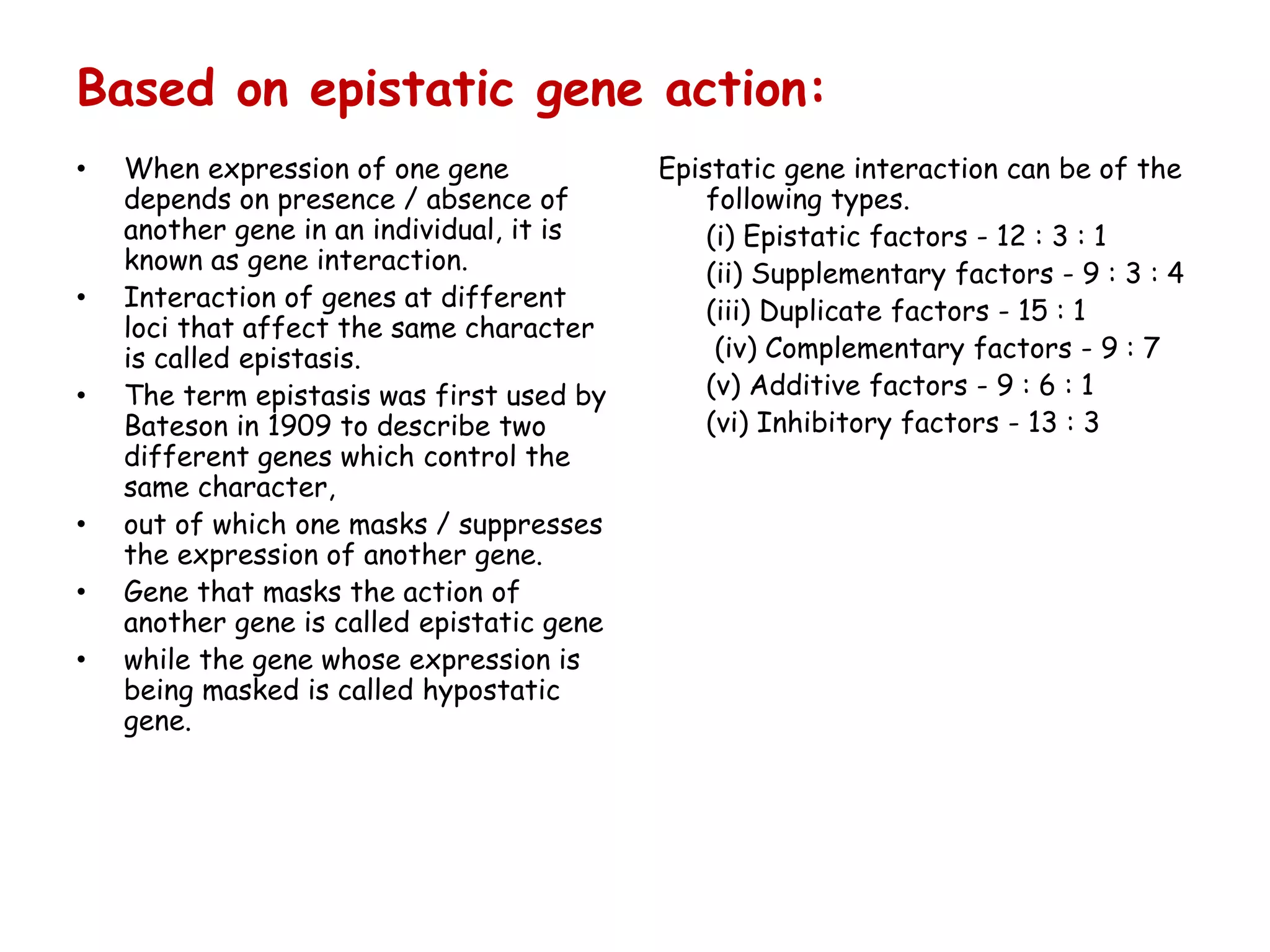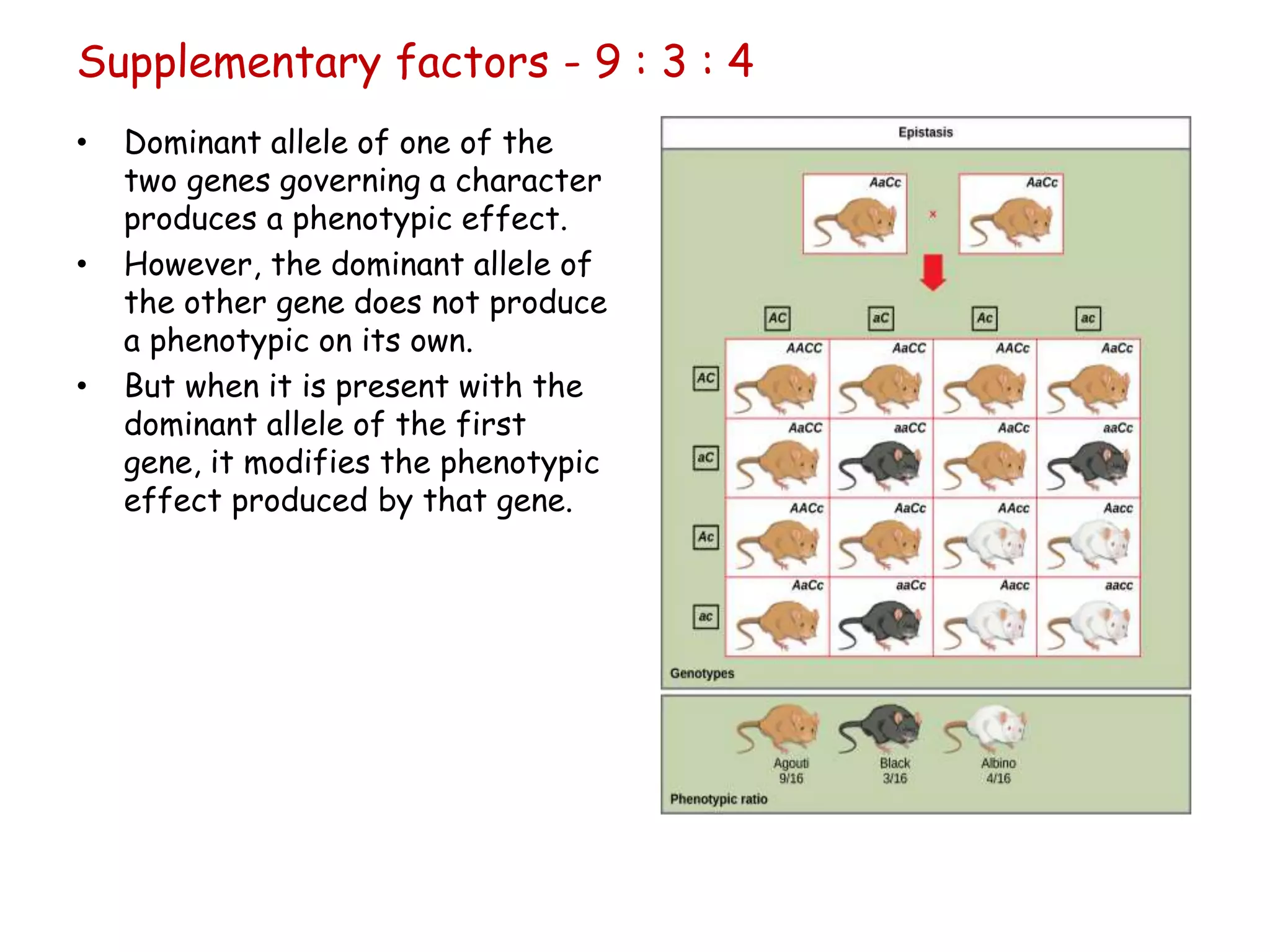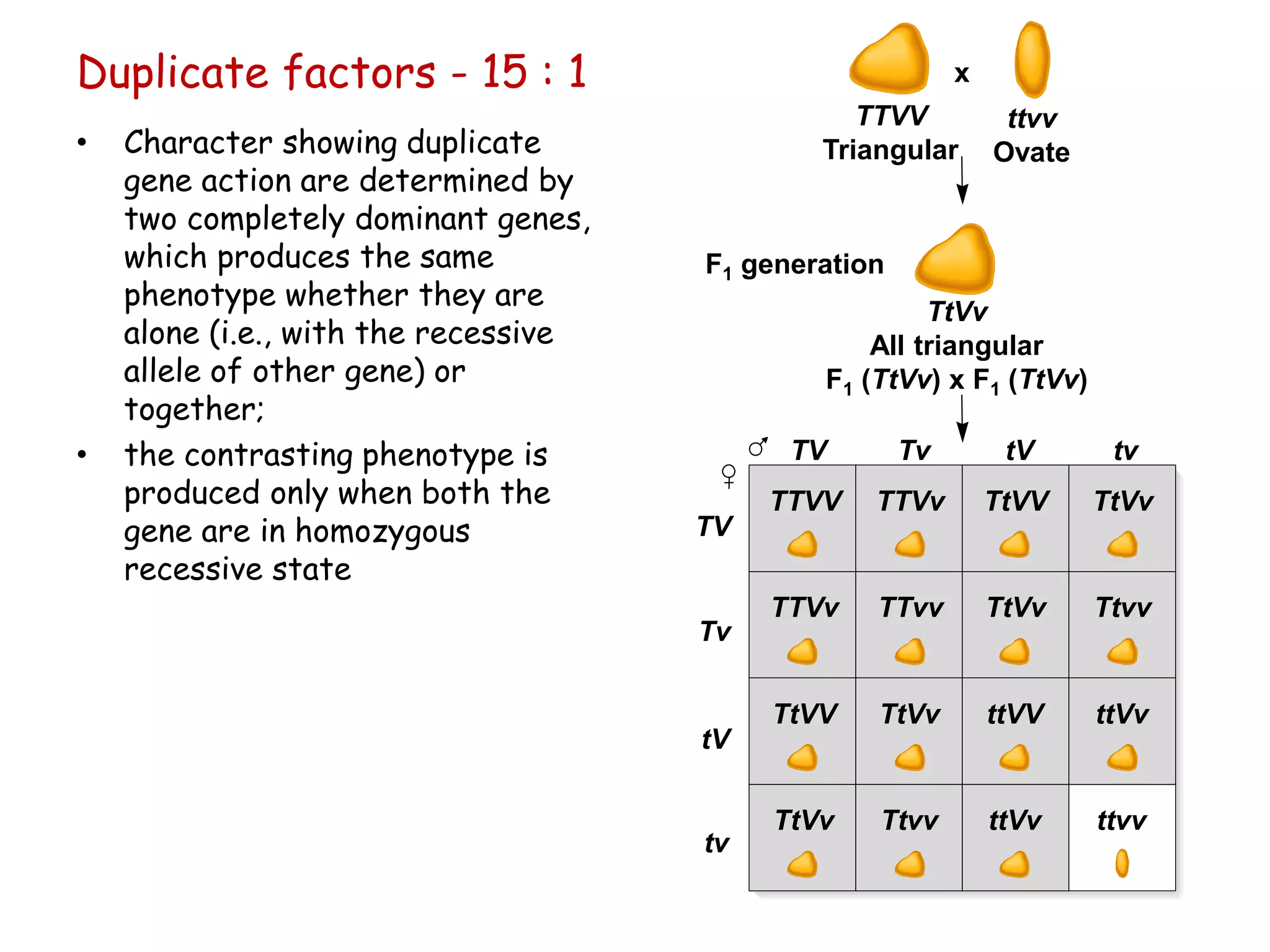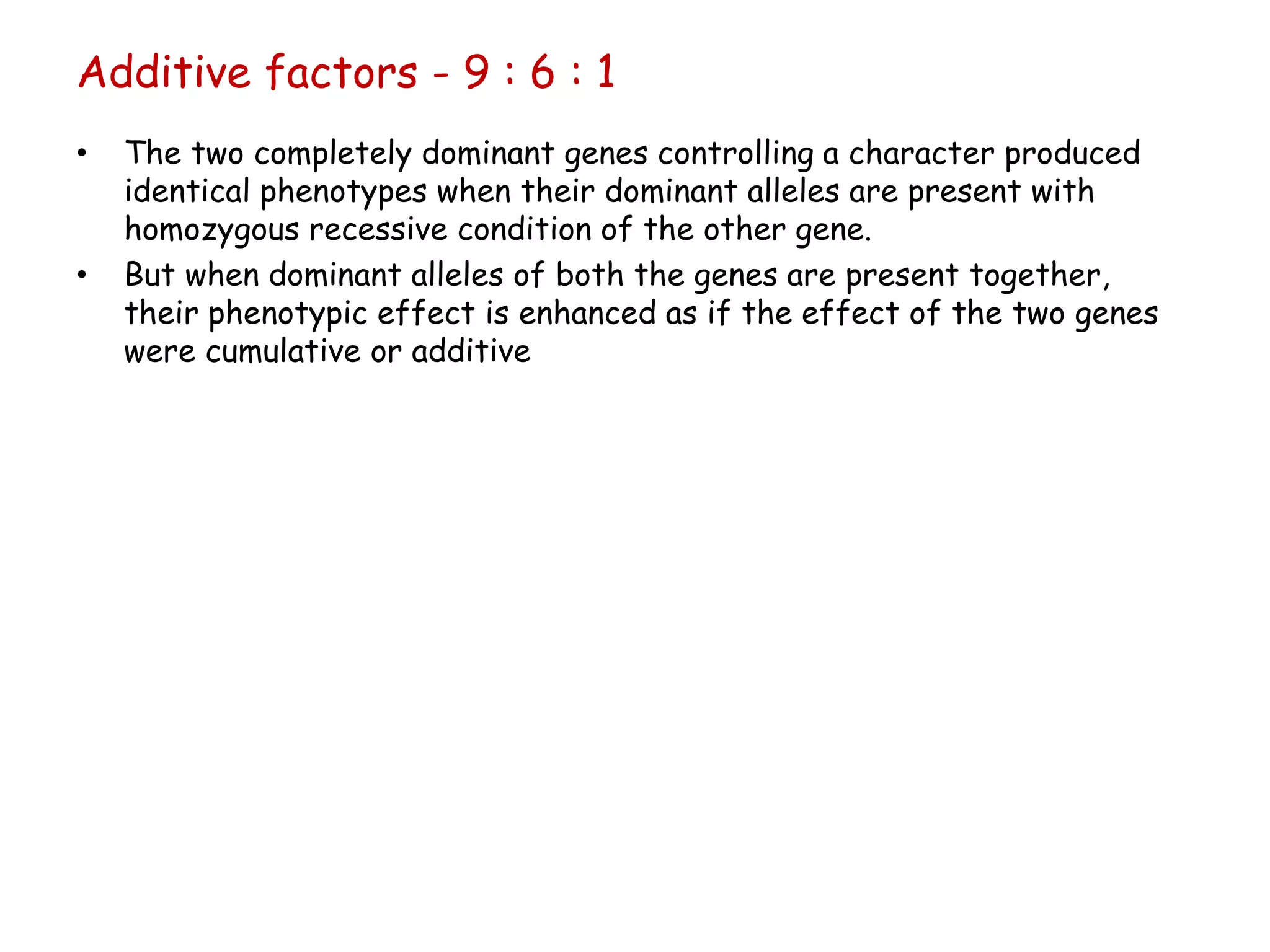The document summarizes Gregor Mendel's experiments with pea plants that laid the foundation for the modern understanding of genetics and heredity. It discusses Mendel's observations of inherited traits in pea plants and how this led him to discover the three laws of inheritance: 1) the law of dominance, 2) the law of segregation, and 3) the law of independent assortment. It also explains some of Mendel's experimental methods and variables he controlled that contributed to his success, such as choosing simple and contrasting traits to study. Finally, it provides examples of genetic crosses and inheritance patterns including monohybrid and dihybrid crosses using Punnett squares.
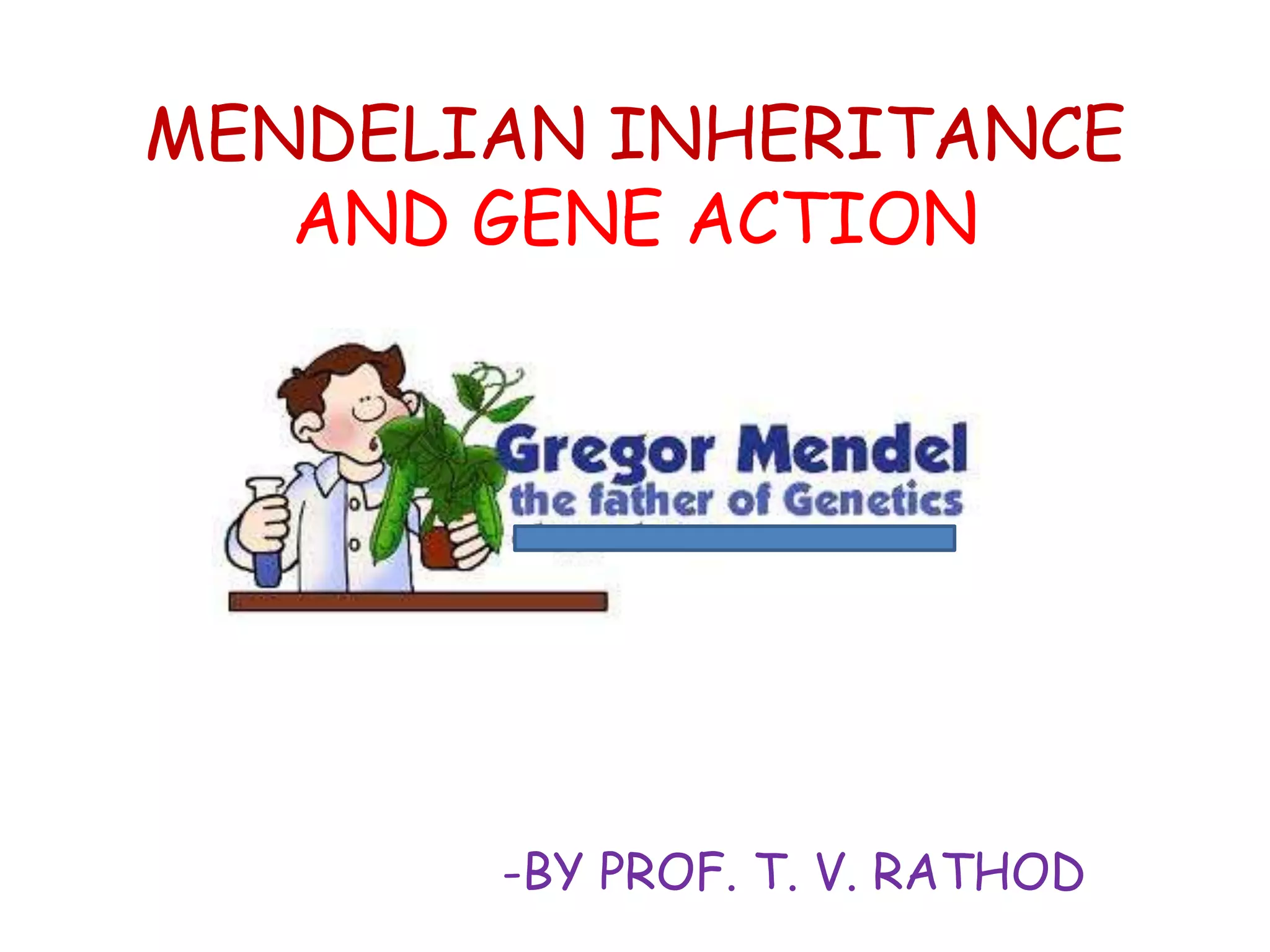
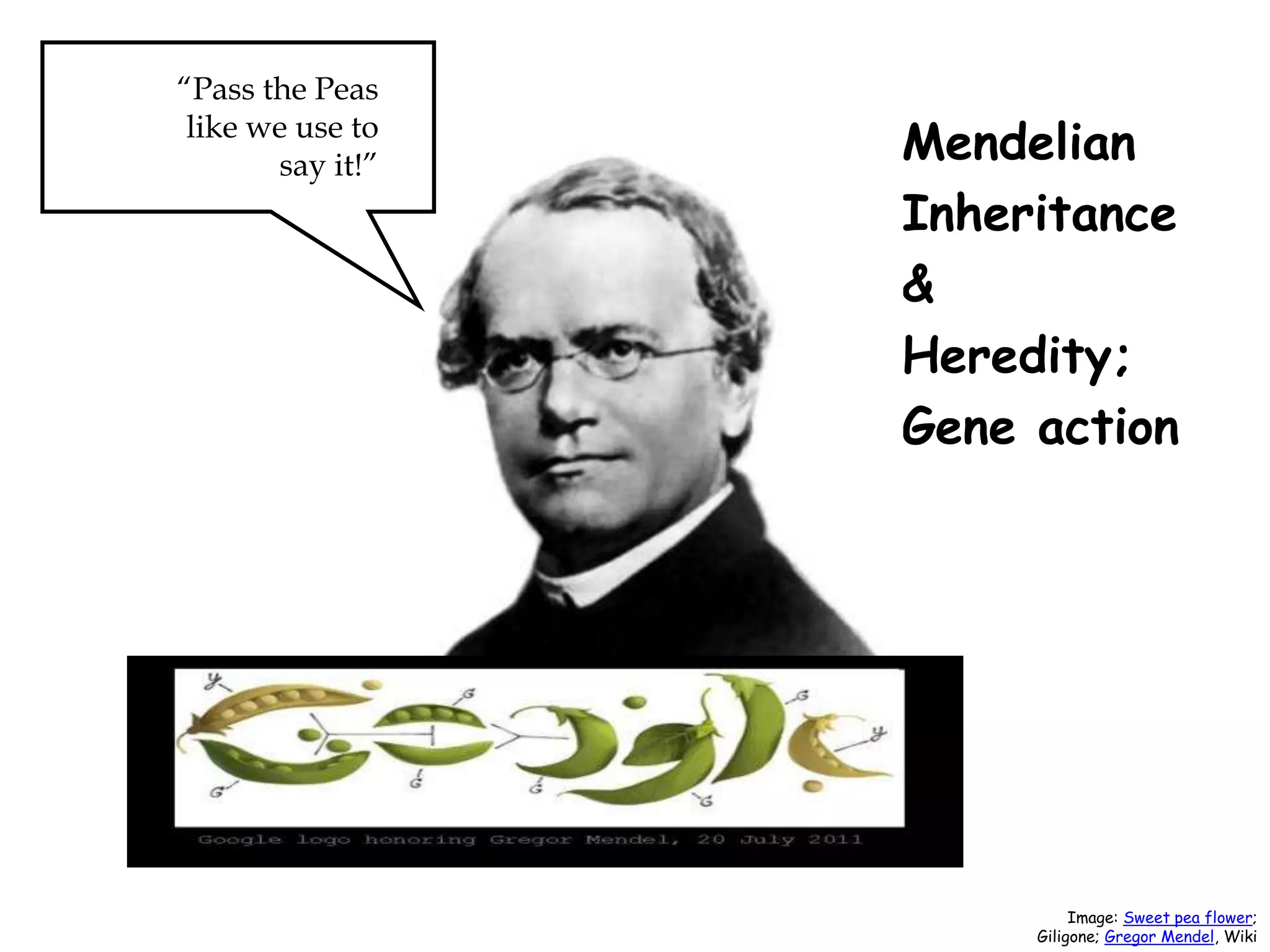

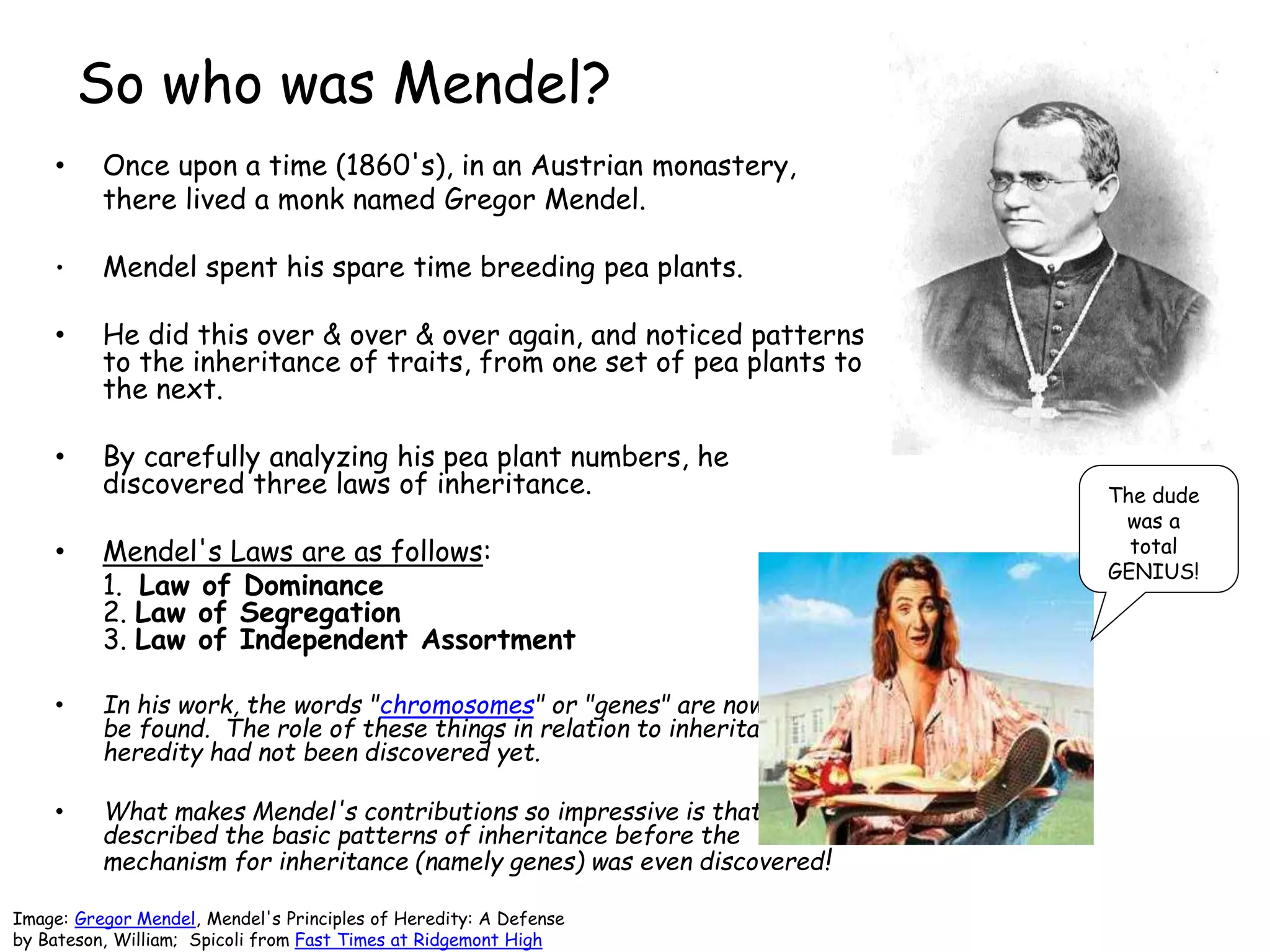
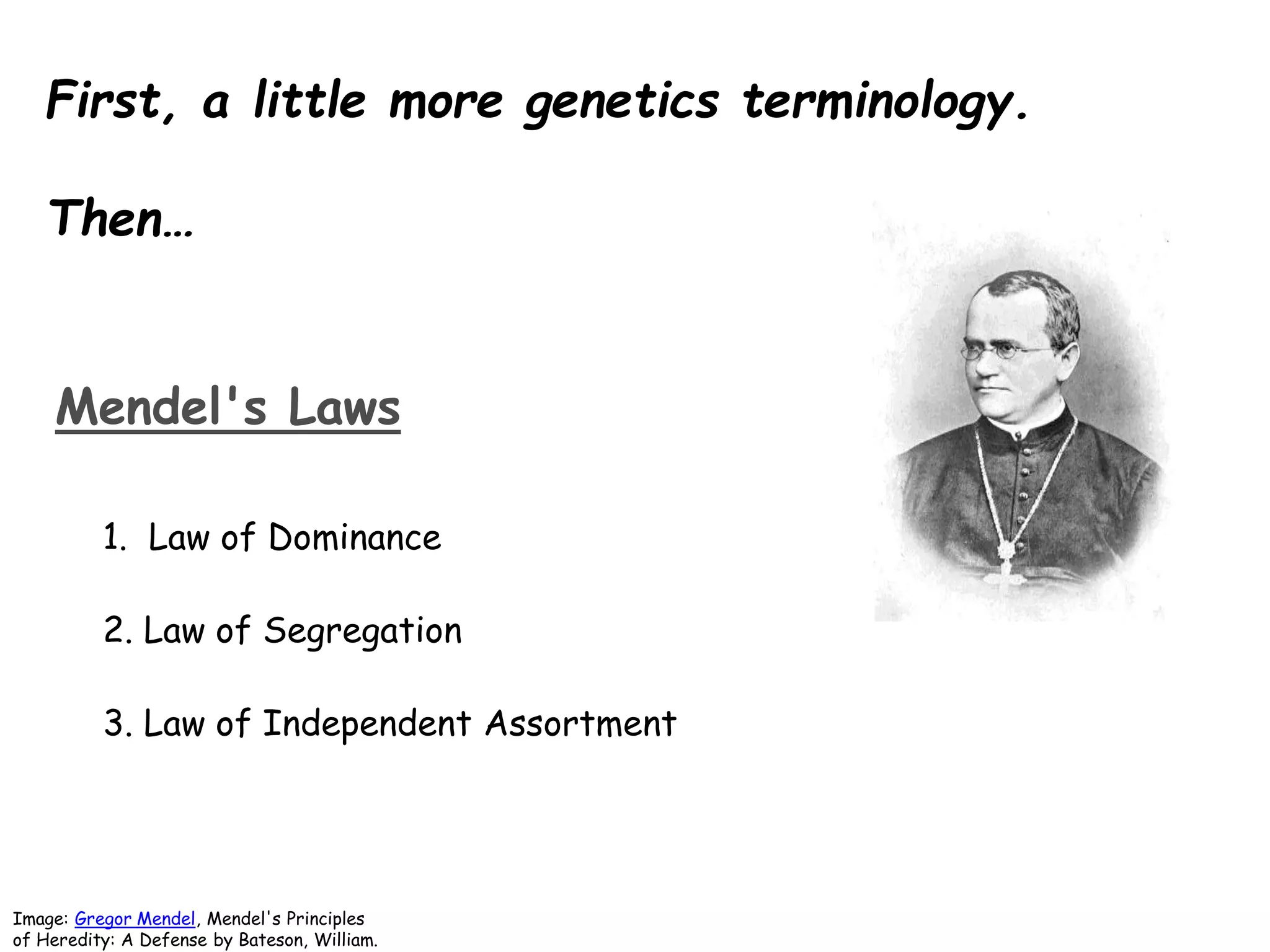





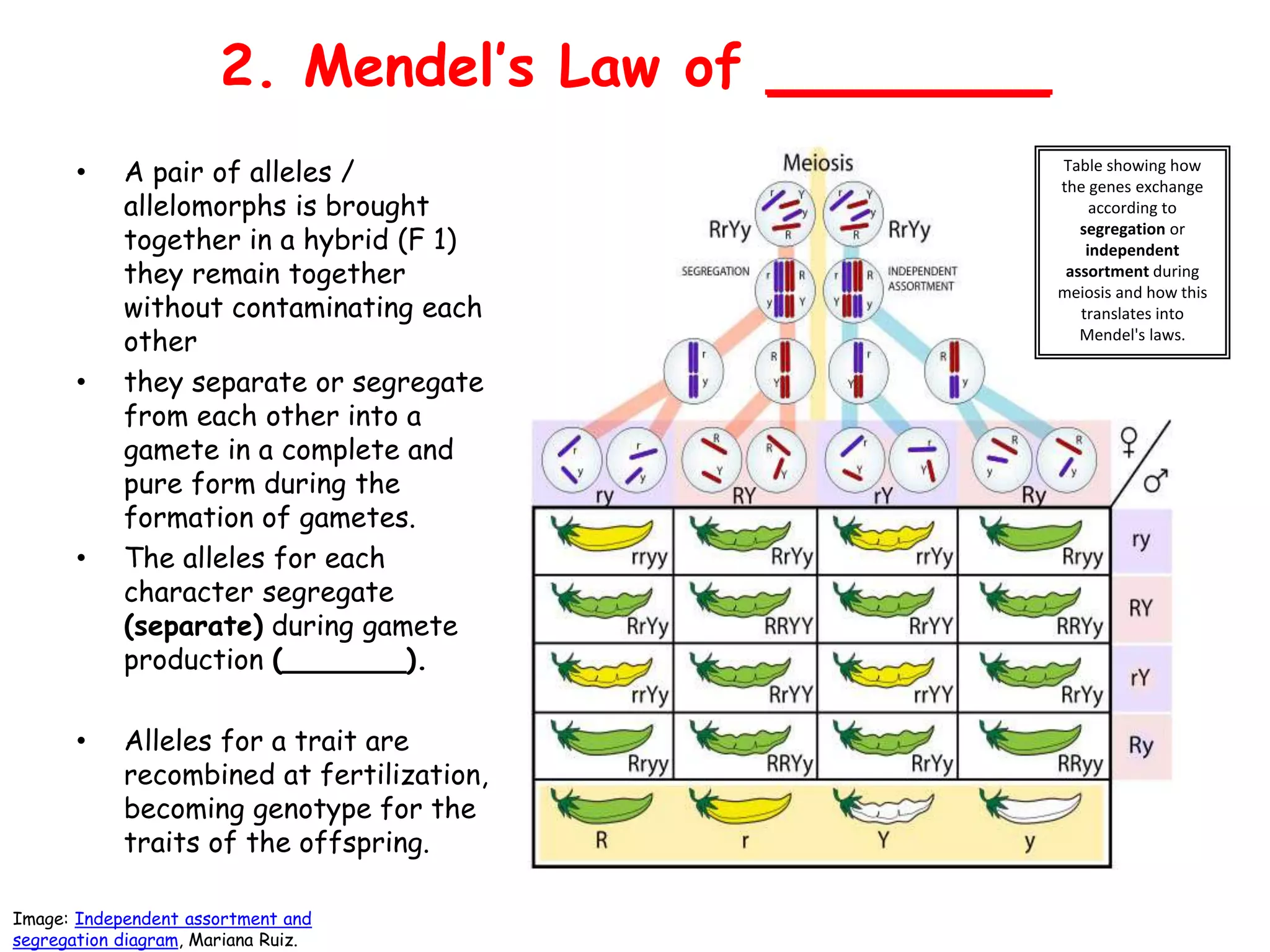



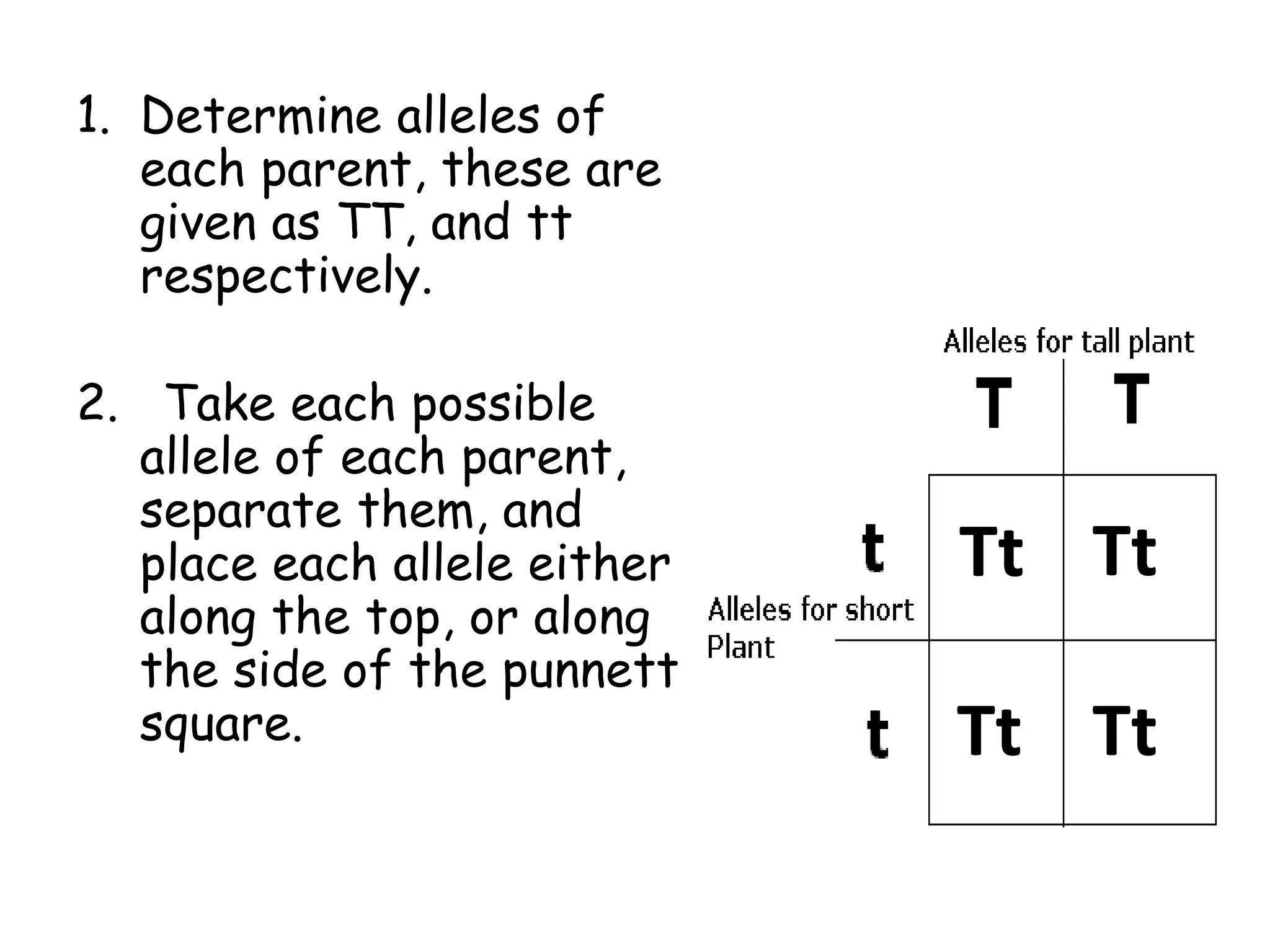




![Figuring Out Patterns of Inheritance
A Punnett square is a tool for
diagramming the possible
genotypes of offspring.
• Let do a Punnett square for the
trait of round seed shape is
dominant over wrinkled seed
shape.
• Round seed shape
- dominant phenotype
- Q: What is gentoype?
• Wrinkled seed shape
- Recessive phenotype
- Q: What is genotype?
F1 (Progeny)
- Dominant phenotype [round seed shape]
- Q: What is F1 genotype?
Male parennt Genotype:
Female
parent
Genotype:
Generation Parental
Parents Female X Male
Phenotype Round X Wrinkled
Genotype RR X rr
Gametes R r
Generation F1 Rr
(Heterozygous) Round
F2 F1 XF1
R
R r
r
RR
Round
Rr
Round
Rr
Round
rr
Wrinkled](https://image.slidesharecdn.com/3mendelliangenetics-190412032149/75/Mendellian-Inheritance-and-Gene-Action-20-2048.jpg)





